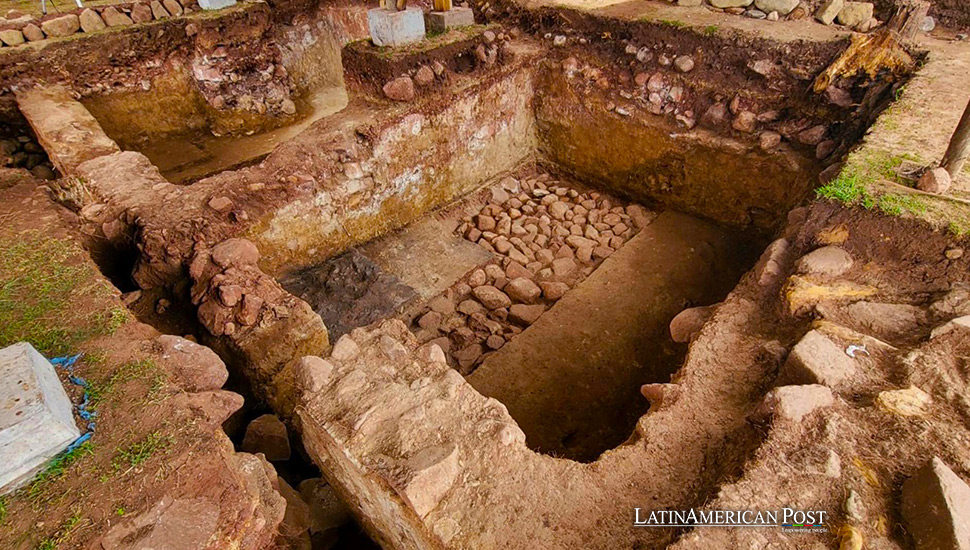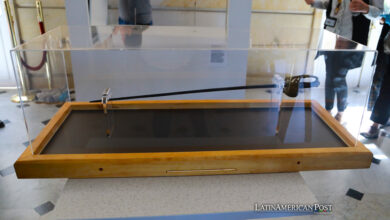Peru Unveils 3,000-Year-Old Ceremonial Temple as A Beacon of Ancient Rituals

In Apurímac, Peru, archaeologists have discovered a white-plastered enclosure in a 3,000-year-old ceremonial temple, offering new insights into the region’s ancient ritual practices and connecting Peru with broader pre-Columbian civilizations across Latin America.
Unveiling Ancient Secrets: The Discovery in Apurímac, Peru
Deep in the southern Andean department of Apurímac, Peru, a groundbreaking archaeological find has emerged from the shadows of history, shedding light on the complex ritualistic practices of ancient civilizations that once flourished across Latin America. The discovery, announced by Peru’s Ministry of Culture, involves a white-plastered ceremonial space within the Rurupa temple in the Anco Huallo-Uripa district of the Chincheros province. This temple, dating back some 3,000 years, stands as a testament to the enduring spiritual and cultural practices that have permeated the Andean region, echoing the ritualistic traditions found throughout ancient Latin American societies.
The Rurupa temple’s strategic location atop a ceremonial platform signifies its importance as a hub for ritual activities, drawing visitors despite its challenging accessibility. This site reveals an initial construction phase aligned with the Middle Formative Period (1000-800 BCE), featuring a rectangular platform with a three-step staircase leading to three rectangular structures. Once a single unit, these buildings later evolved into two separate entities, each marked by distinct entrances and coated in a vibrant white layer adorned with lead, brown, and reddish hues.
oastal Influences in the Andean Highlands: Unusual Architectural Anomalies
What makes the architecture of Rurupa particularly intriguing is its coastal influences, which are unusual for the Andean highlands. This anomaly suggests that coastal inhabitants traveled to this sacred mountain temple to perform their rituals, highlighting the interconnectedness of Peru’s ancient cultures. Such practices resonate with those of neighboring Latin American civilizations, where coastal-to-highland exchanges were common, illustrating a shared tradition of pilgrimage and ritual across vast distances.
A guinea pig skull on a rectangular altar further emphasizes the temple’s role in ritual practices, a common element in Andean spiritual ceremonies that parallels other pre-Columbian cultures across Latin America. This finding marks a significant moment in understanding the region’s continuity and diversity of ceremonial traditions.
As the temple expanded during the Late Formative Period (800 BCE-400 BCE), its transformation reflected the introduction of new ideologies, possibly influenced by broader cultural exchanges within Latin America. The shift to larger stone blocks and the construction of a sunken square plaza connected by two-step staircases signifies a monumental phase in the temple’s history, mirroring similar architectural advancements in Mesoamerica and other Andean sites.
Excavating Peru’s Past: Collaborative Efforts and Discoveries
The excavation, led by archaeologist Edison Mendoza of the National University of San Cristóbal de Huamanga, with contributions from Elder Sayago and students of Archaeology and History, underscores the collaborative effort to unravel Peru’s ancient past. Funded by the municipality of Anco Huallo-Uripa, this project aims to preserve the legacy of the Rurupa temple and open its doors to visitors, allowing them to engage directly with the rich tapestry of Andean history.
Also read: Decolonizing Museums is Peruvian Artist Sandra Gamarra’s Vision at the Venice Biennale
This discovery in Apurímac is a reminder of the sophisticated societies that existed in Latin America long before the arrival of European explorers, offering valuable insights into the ceremonial and cultural complexities of ancient Andean civilizations. As Peru prepares to welcome visitors to the Rurupa temple, it stands as a beacon of ancient rituals, bridging the past with the present and fostering a deeper appreciation for the indigenous heritage that shapes Latin America’s diverse cultural landscape.





